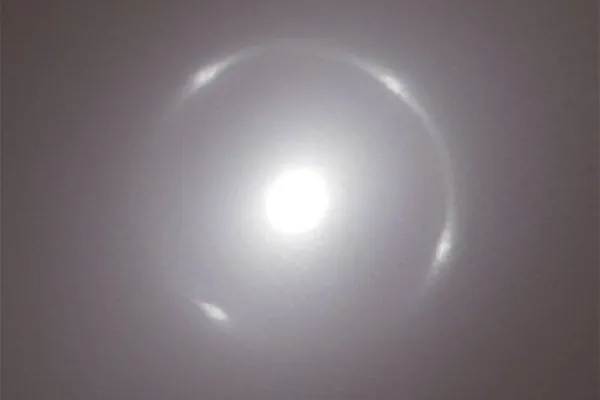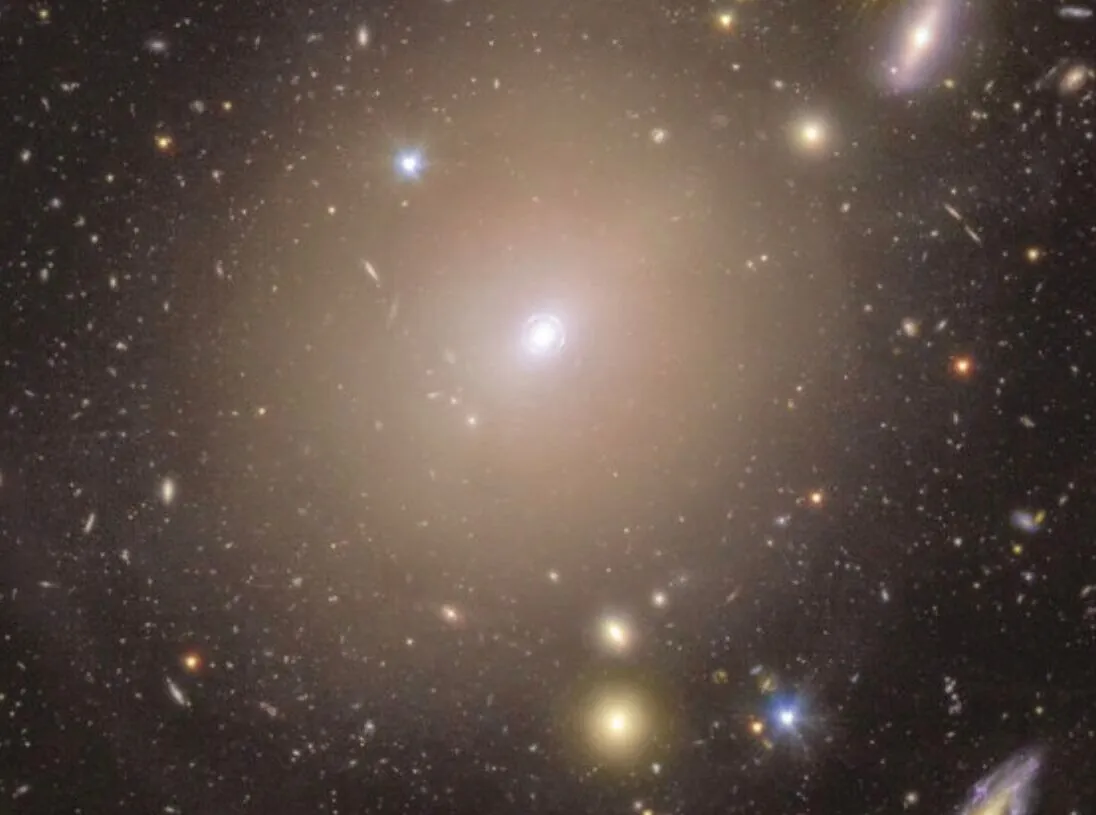Towards the largest map of the Universe: Euclid telescope captured a rare Einstein ring
Kyiv • UNN
The Euclid space telescope has discovered a unique gravitational lensing phenomenon at a distance of over 4 billion light-years.

The captivating image shows the neighboring galaxy NGC 6505 surrounded by a perfect circle of light, and a more distant galaxy can also be seen. This was reported by UNN with reference to the European Space Agency.
Details
The Euclid space telescope captured a rare phenomenon called an "Einstein ring," which occurs when light from a distant galaxy is distorted by the gravity of another galaxy.

The captivating image shows the nearby galaxy NGC 6505 surrounded by a perfect circle of light. It is also explained that the ring allows a glimpse into a more distant galaxy located directly behind NGC 6505.
Additionally
Albert Einstein's general theory of relativity predicts that light bends around massive objects in space. Thus, galaxies can act as giant lenses.
A gravitational lens is a massive body or system of bodies (a galaxy, a cluster of galaxies) that distorts the direction of radiation propagation with its gravitational field, similar to how an ordinary lens distorts a light beam.
Gravitational lensing is used to study many phenomena and objects in distant corners of the Universe.
The gravitational fields of galaxies and galaxy clusters can create noticeable lensing effects. Dark matter (a mysterious substance that physicists believe makes up most of the Universe) also has a gravitational effect and can cause lensing.
Unraveling the mysteries of dark matter and dark energy, which together make up 95% of the Universe, is the main goal of the European Space Agency's 1 billion euro (£850 million) mission.
Einstein rings are a powerful tool for astronomers because they reveal objects and indicate the mass of the intermediate galaxy, including any hidden mass in the form of dark matter.
Rare phenomenon in the lens
The European Space Agency published images of the phenomenon, which show the galaxy NGC 6505, located 590 million light-years from Earth, surrounded by a perfect circle of light.
I find it very intriguing that this ring was observed inside a well-known galaxy, first discovered in 1884. This galaxy has been known to astronomers for a long time. However, this ring has never been observed before. This shows how powerful Euclid is, capable of finding new things even in places that we thought were well known.

The Einstein ring is an example of gravitational lensing. All gravitational lenses are special because they are rare and incredibly useful, but this one is particularly extraordinary because it is located so close to Earth, and the alignment makes it beautiful.
Euclid Space Telescope
Euclid was selected in 2011 as a "medium-class" mission for the ESA Cosmic Vision program and, along with Herschel and Planck Surveyor. The telescope is equipped with a visible and infrared Korsch telescope (three-mirror anastigmatic) with a 1.2-meter diameter mirror and is located in a halo orbit at the L2 Lagrange point of the Sun-Earth system.
The Euclid telescope is capable of detecting galaxies up to 10 billion light-years away. The current goal is to create the largest 3D cosmic map, which will allow astronomers to infer the large-scale distribution of dark matter and detect the influence of dark energy, the mysterious force that accelerates the expansion of the Universe.